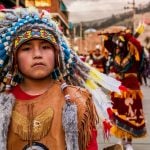Native American Food: Camas
( – promoted by navajo)
The Plateau Culture Area is the region which extends east from the Cascade Mountains in Washington to the Rocky Mountains in Montana. It extends from the Fraser River in British Columbia to the Blue Mountains in Oregon. The Indian tribes which inhabited this area have historic and cultural ties with the tribes on the Pacific Coast as well as with the tribes on the Northern Plains. The Plateau tribes gathered and used over 130 different wild plants. It is estimated that from 40% to 60% of their calories came from the plant foods which they gathered. One of the most important root crops for the Plateau tribes was camas, which provided a major source of carbohydrates for their diet.
Camas is a lily-like plant whose bulb can be fire-baked to make a sweet and nutritious staple. In some places in the Northwest, camas was so common that non-Indian travelers would mistake the plant’s blue flowers for distant lakes.

Camas is very high in protein: 5.4 ounces of protein per pound of roots. In comparison, steelhead trout (Salmo gairdneri) has 3.4 ounces of protein per pound.
The proper time to gather camas is when the lower half of the flowers begins to fade. Indian people generally gathered camas in June, but this varied according to altitude and seasonal weather conditions. Some of the tribes, such as the Flathead, designated June as Camas Moon.
The camas was often dug up using digging sticks made from elk antlers. A woman could dig up about a bushel of roots in a day from a site that was about half an acre in size.
At the camas digging camps, the camas was usually cooked in earth ovens before eating it or storing it. Since the same camps were used each season, the pit ovens used for roasting the camas were also reused.
Although the men gathered the wood for the ovens, men were not allowed near the roasting pits for fear that the camas would not be roasted properly.
The oven (a roasting pit dug into the ground) was preheated by building a fire in it and placing small rocks (about 5″ in diameter) in with the wood. In addition to the small rocks, some pits had large flat stones on the bottom which were also heated by the fire. When the rocks were hot, they were covered with wet vegetation such as slough grass, alder branches, willow, and/or skunk cabbage leaves. Then the camas bulbs were placed on top of the vegetation. Sometimes Douglas onions (Allium douglasii) were placed in with the camas. The camas was then covered with bark and earth and a fire was built on top of the oven. Cooking usually took between 12 and 70 hours, depending on the number of camas bulbs in the oven.
The camas which was intended for storage was then dried for about a week. Dried camas can be preserved for many years. Some American explorers report eating camas that had been prepared 36 years earlier.
The early Europeans in the area, such as Lewis and Clark, occasionally consumed camas after they were shown how to harvest it and prepare it. One Jesuit missionary fermented camas to make alcohol. Another Jesuit missionary observed that the consumption of camas by those unaccustomed to it is “followed by strong odors accompanied by loud sounds”.
In order to increase the camas yield, the camas areas, as well as other root gathering areas, were occasionally burned over.



